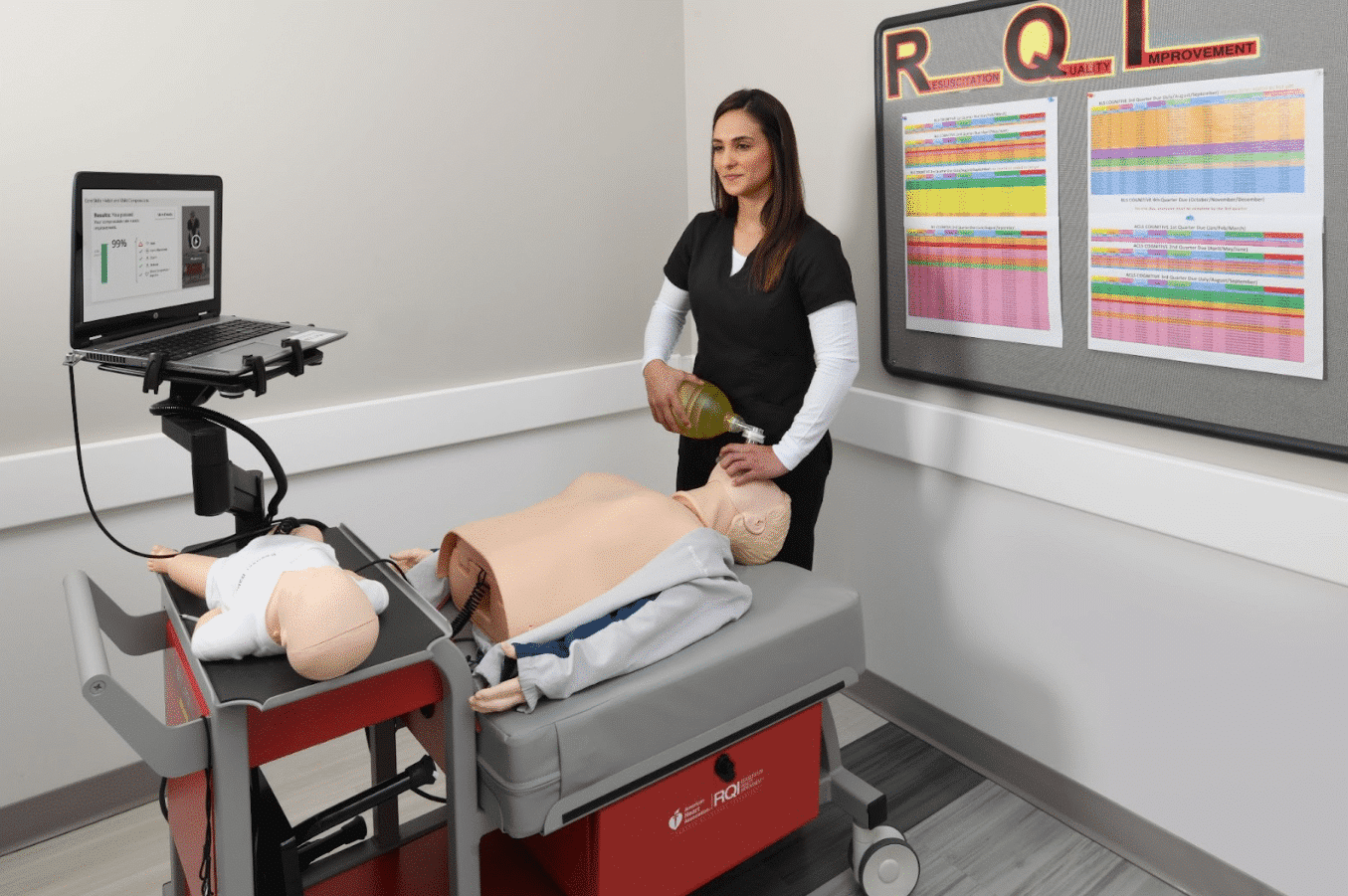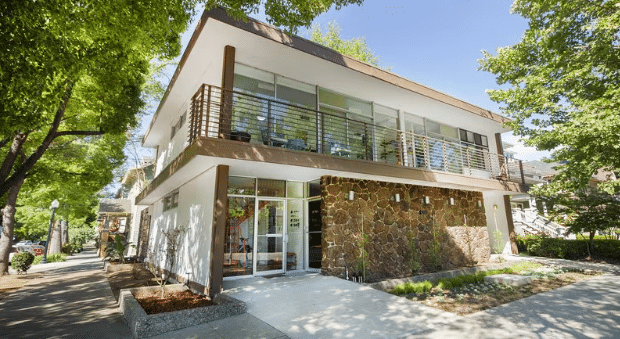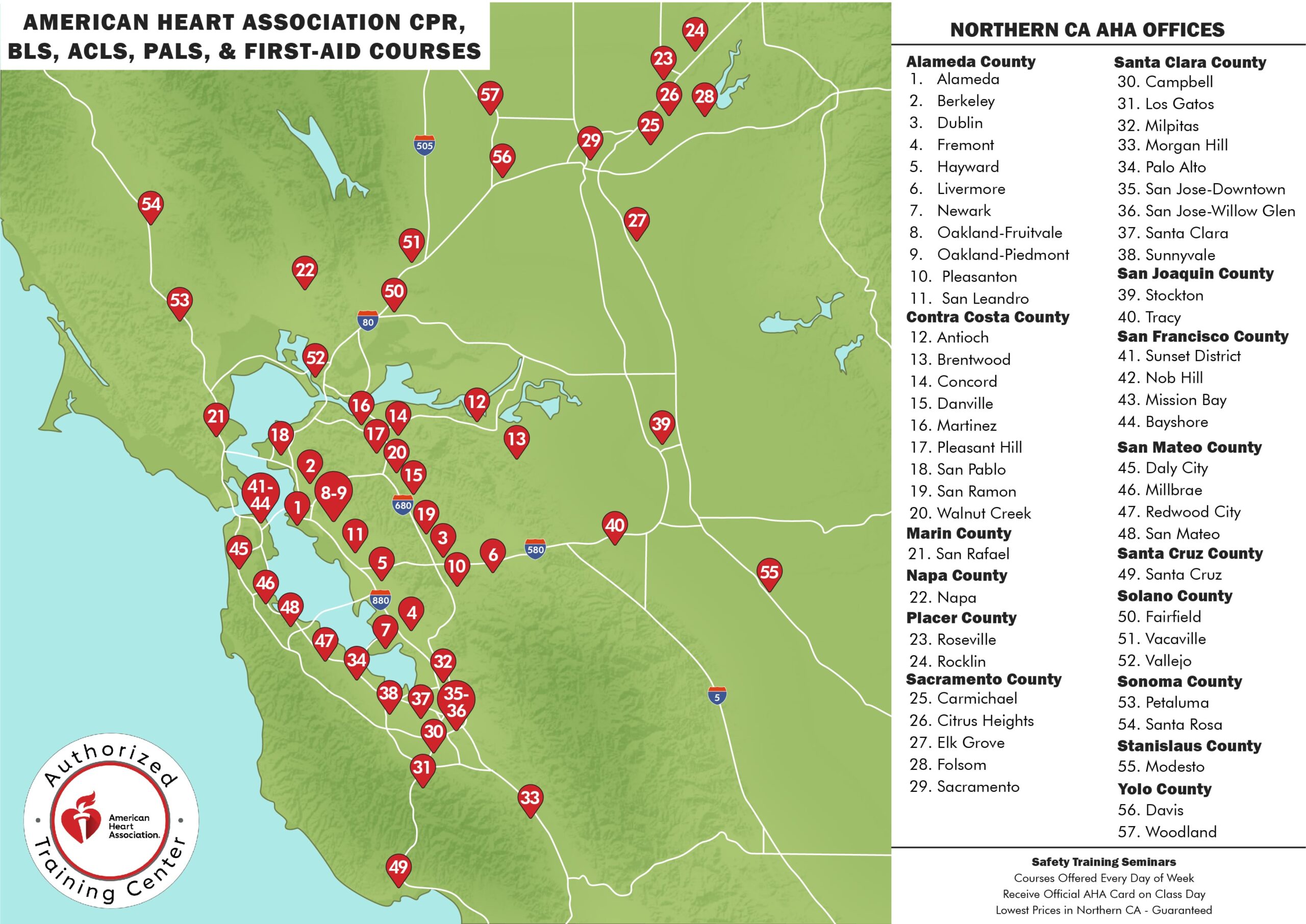
American Heart Association Course Finder

BLS, ACLS, PALS, CPR & First-aid Classes
American Heart Association Course Registration
Safety Training Seminars offers American Heart Association CPR, BLS, ACLS, and PALS courses in Sacramento, CA. This office is close by the surrounding cities of Roseville and Elk Grove. If you live in Sacramento, you can take a BLS, ACLS, or PALS course near you. We can teach CPR & First-aid classes at your location any day of the week. Ask us about our group discounts.
American Heart Association Course Registration
Safety Training Seminars offers American Heart Association CPR, BLS, ACLS, and PALS courses in Sacramento, CA. This office is close by the surrounding cities of Roseville and Elk Grove. If you live in Sacramento, you can take a BLS, ACLS, or PALS course near you. We can teach CPR & First-aid classes at your location any day of the week. Ask us about our group discounts.
What is American Heart Association RQI
The American Heart Association RQI (Resuscitation Quality Improvement) program is one of the most popular, modern, and efficient ways for medical and healthcare professionals to receive their official American Heart Association BLS, ACLS, and PALS certification cards.
Three Easy Steps
1. Take the American Heart Association online course at home (a few hours).
2. Arrive to one of our 45 local offices and practice with the VAM (voice assisted manikin).
3. Receive your certification card on the day of the class.

About American Heart Association RQI
Entry Instructions for Sacramento CPR Classroom
Sacramento, California: Advancing Healthcare Excellence in the Capital City
Introduction: Nestled along the banks of the Sacramento River, the vibrant city of Sacramento, California, is not only the state’s capital but also a hub of exceptional medical facilities dedicated to providing high-quality healthcare services. With a blend of advanced hospitals, specialized clinics, and a strong commitment to community health, Sacramento stands as a shining example of healthcare excellence in the region.
Diverse Healthcare Landscape: Sacramento offers a diverse array of medical facilities that cater to a wide range of healthcare needs. From renowned hospitals to specialized treatment centers, the city’s healthcare ecosystem ensures that residents have access to comprehensive medical services. Whether seeking preventive care, advanced treatments, or routine medical attention, Sacramento’s medical institutions prioritize patient health and holistic well-being.
Leading Medical Centers: Sacramento is home to several leading medical centers that have earned recognition for their commitment to healthcare excellence. UC Davis Medical Center, affiliated with the UC Davis School of Medicine, stands as a pinnacle of advanced medical care. With state-of-the-art facilities and a reputation for cutting-edge research, the medical center provides an extensive range of services, from intricate surgeries to innovative therapies.
Patient-Centric Approach: Sacramento’s medical facilities place a strong emphasis on patient-centered care, reflecting the city’s dedication to community well-being. Local clinics and healthcare centers emphasize building strong relationships between doctors and patients, understanding individual health needs, and fostering trust and compassion. This approach ensures that residents receive personalized care that addresses not only their physical health but also their emotional well-being.
Promoting Preventive Health Initiatives: Sacramento places a significant focus on preventive health initiatives aimed at enhancing community wellness. The city frequently hosts health education programs, wellness workshops, and community health events to raise awareness about healthy lifestyles and disease prevention. By empowering residents with knowledge and tools for healthier living, Sacramento’s medical facilities contribute to a healthier and more informed community.
Embracing Innovative Medical Technologies: Reflecting its proximity to technological innovation, Sacramento’s medical institutions actively embrace advanced medical technologies to elevate patient care. Cutting-edge diagnostic tools, state-of-the-art treatment methods, and electronic health records contribute to precise diagnoses, effective treatments, and streamlined patient experiences. Additionally, the integration of telemedicine services enables patients to access medical consultations remotely.
Comprehensive Mental Health Support: Recognizing the importance of holistic well-being, Sacramento’s medical facilities offer comprehensive support for mental health and emotional wellness. Mental health clinics, therapists, and counselors collaborate to provide patients with resources to address mental health concerns. This integrated approach underscores the significance of nurturing both physical and mental health.
Emergency Medical Services: Sacramento’s emergency medical services (EMS) play a vital role in safeguarding community health and safety. Highly trained paramedics and emergency medical technicians (EMTs) respond swiftly to medical emergencies, offering critical care on-site and during transportation to medical facilities. Their expertise and rapid response contribute significantly to saving lives and maintaining community well-being.
Conclusion: Sacramento, California, stands as a testament to healthcare excellence and compassionate care, thriving amidst its vibrant culture and historical significance. With leading medical centers, patient-focused care, and a commitment to leveraging technology for enhanced patient outcomes, Sacramento’s healthcare landscape is an embodiment of exceptional and forward-thinking healthcare. As the city continues to evolve and grow, its dedication to fostering well-being and delivering top-tier healthcare services remains a cornerstone of its identity. Sacramento’s unwavering commitment to health, community wellness, and patient-centric care ensures that it remains a thriving and health-focused community for generations to come.
Life-Saving Skills: Exploring CPR, BLS, ACLS, and PALS Classes
In the realm of emergency medical care, few skills are as crucial as Cardio-Pulmonary Resuscitation (CPR) and Advanced Cardiac Life Support (ACLS), Basic Life Support (BLS), and Pediatric Advanced Life Support (PALS) techniques. These life-saving techniques form the backbone of first response and medical intervention, often making the difference between life and death in critical situations. Let’s delve into the significance of each of these classes and their role in maintaining public health and safety.
Cardio-Pulmonary Resuscitation (CPR): CPR is a fundamental life-saving technique that can be administered by trained individuals to sustain blood circulation and provide artificial respiration when a person’s heart has stopped beating. CPR involves a combination of chest compressions and rescue breaths, aimed at keeping oxygenated blood flowing to vital organs until professional medical help arrives. CPR classes provide participants with the skills to recognize cardiac arrest, perform effective chest compressions, and deliver rescue breaths. These classes are vital for both medical professionals and laypersons, empowering them to respond swiftly and effectively in emergencies.
Basic Life Support (BLS): BLS takes CPR skills to the next level by incorporating additional techniques and equipment usage. BLS classes are designed for healthcare providers, including doctors, nurses, paramedics, and emergency medical technicians (EMTs). Participants learn how to assess a patient’s condition, deliver high-quality CPR, and use automated external defibrillators (AEDs) to restore a regular heartbeat. BLS training emphasizes teamwork, effective communication, and quick decision-making to optimize patient outcomes during cardiac emergencies.
Advanced Cardiac Life Support (ACLS): ACLS is an advanced course tailored for healthcare professionals who are involved in the management of cardiac arrest and other cardiovascular emergencies. ACLS builds upon the foundation of BLS and focuses on identifying and treating potentially life-threatening conditions such as stroke, myocardial infarction, and arrhythmias. Participants learn to interpret electrocardiograms (ECGs), administer medications, and perform advanced airway management. ACLS classes equip medical personnel with the skills to respond confidently to complex cardiac scenarios, ensuring comprehensive care for critically ill patients.
Pediatric Advanced Life Support (PALS): PALS training is geared towards healthcare providers who care for infants and children during emergencies. Pediatric patients have unique physiological needs, making PALS classes essential for those working in pediatrics, emergency medicine, and intensive care. PALS courses cover topics such as pediatric assessment, effective respiratory support, and the management of pediatric cardiac arrest. Participants gain the knowledge and skills necessary to provide specialized care and interventions that can make a critical difference in the outcomes of pediatric emergencies.
NRP, or Neonatal Resuscitation Program, is a critical medical initiative that focuses on saving newborns who struggle to breathe at birth. This specialized training equips healthcare providers with the skills to assess and manage respiratory distress in infants. NRP emphasizes a systematic approach, teaching effective ventilation techniques and chest compressions if needed. Regularly updated guidelines ensure that participants stay current with the best practices in neonatal care. By enhancing healthcare professionals’ abilities to respond swiftly and effectively to newborn respiratory challenges, NRP plays a vital role in improving infant survival rates and ensuring a healthier start to life.
First-aid classes offer indispensable life skills that empower individuals to respond confidently in emergencies. These structured courses cover a spectrum of situations, from minor injuries to critical incidents, teaching participants how to provide immediate care before professional help arrives. Participants learn to administer CPR, treat wounds, manage choking, and address common health crises. Hands-on training fosters essential skills and boosts confidence, enabling swift and effective action in times of need. First-aid classes are invaluable for workplaces, homes, and communities, creating a network of capable first responders. Mastering these skills not only saves lives but also fosters a safer and more prepared society.
Incorporating these life-saving techniques into healthcare systems, workplaces, and communities can significantly enhance the response to medical emergencies. Quick and effective interventions provided by individuals trained in CPR, BLS, ACLS, and PALS can stabilize patients and improve their chances of survival before professional medical assistance arrives. Moreover, these classes promote a culture of preparedness, empowering individuals to step forward and take action when faced with emergency situations.
In conclusion, American Heart Association CPR, BLS, ACLS, and PALS classes play an indispensable role in equipping individuals with the skills and knowledge needed to respond effectively to various medical emergencies. These courses bridge the gap between bystander assistance and professional medical care, ultimately contributing to improved patient outcomes and increased survival rates. By investing in these life-saving classes, individuals and healthcare professionals alike become vital links in the chain of survival, ensuring that timely and appropriate care is delivered when it matters most.
Our Blog

Psychological Recovery for CPR Survivors
In this exhaustive exploration of the psychological recovery for CPR survivors, we have underscored the healing potential of awareness, support, and resilience.

Why CPR is Important in Healthcare
Cardio-pulmonary resuscitation (CPR) is a life-saving technique that everyone should know how to perform. It involves a series of actions designed to help someone who

7 Common CPR Myths Debunked
Cardiopulmonary resuscitation (CPR) is a life-saving technique that can help a person in the event of cardiac arrest. It involves chest compressions that are performed

Importance of Workplace CPR & First-Aid Training
Accidents can happen anytime and anywhere, even in the workplace. Although we may try our best to ensure a safe and healthy work environment, we



